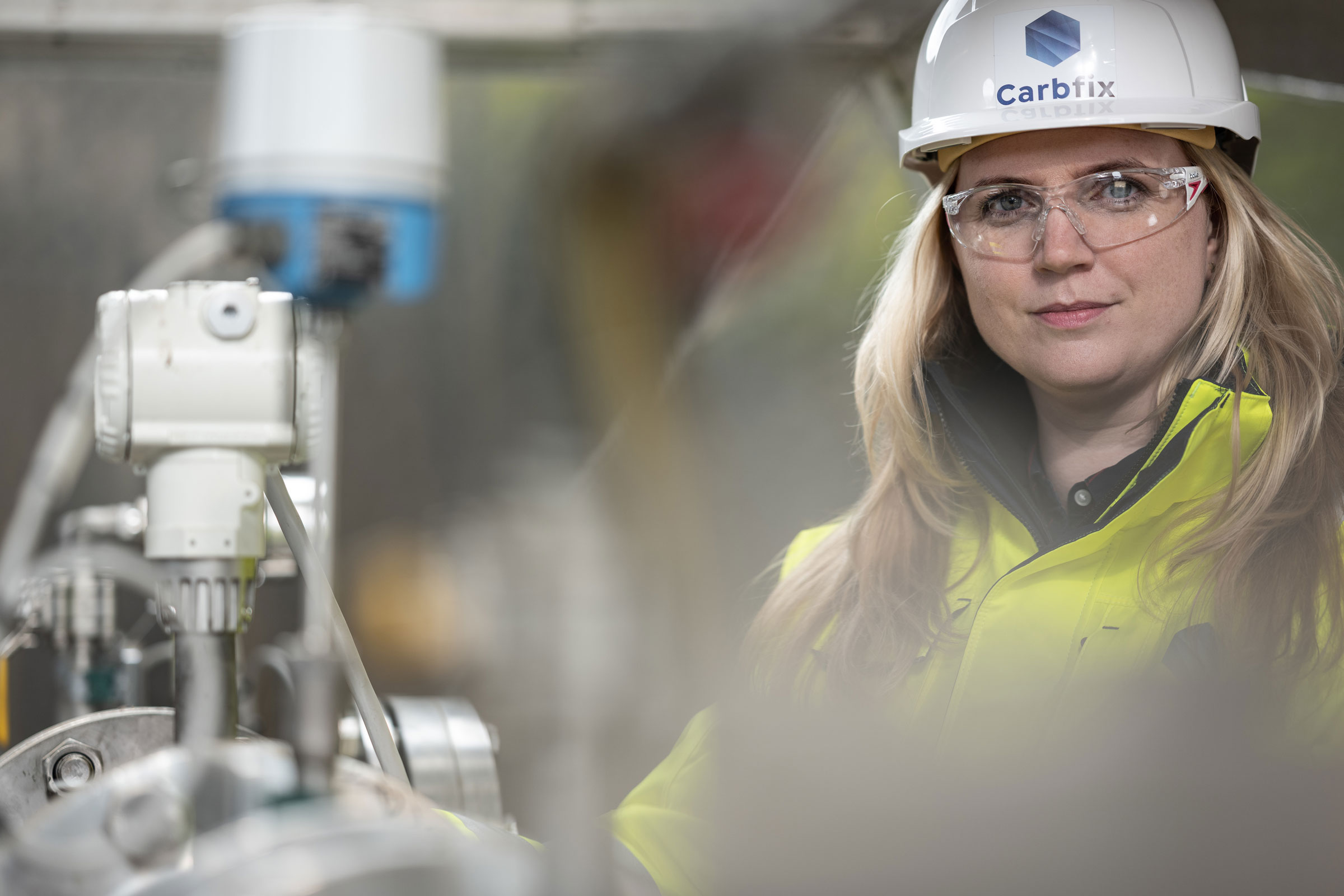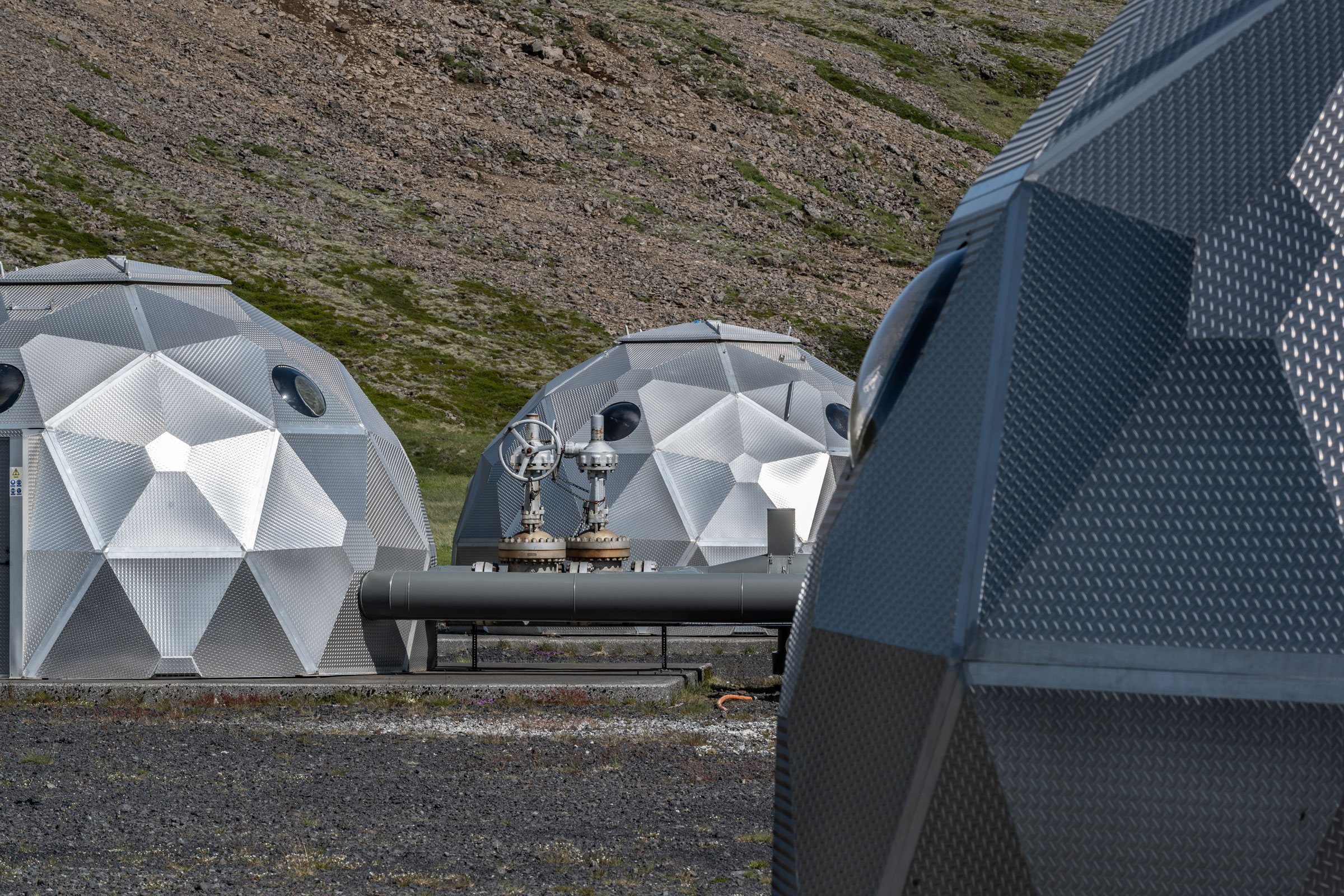Story at a glance:
- During carbon capture, carbon dioxide (CO2) is taken from the atmosphere, where it can then be injected into rock.
- Over time the injected CO2 forms into stone.
- Carbfix has found an efficient method to this process that turns CO2 into stone in less than two years.
Iceland is known for many things: glaciers, volcanoes, the northern lights, and its Viking history. But beneath the surface—literally—lies one of the country’s exciting eco-friendly efforts: Carbfix.
Started in 2006, Carbfix is a long-lasting environment solution that removes carbon dioxide (CO2) from the air and turns into stone in less than two years. The best part? All it takes is a carbon injectable.
The process uses direct air capture, a carbon removal technique that captures CO2 from the atmosphere—an otherwise “very dilute stream of CO2,” says Sandra Ósk Snæbjörnsdóttir, the geoscientist at the helm of Carbfix. “This is similar to finding the four pink LEGOs in a pile of 10,000 LEGOs.”
From there the CO2 is compressed to be injected and stored in geological formations, called carbon storage, or used to make products such as cement. “The direct air capture method is important for capturing emissions that cannot be captured directly, such as CO2 emissions from airplanes,” she says.
And though direct air capture can be energy-intensive, “it is anticipated that during the latter half of this century we will have to start removing already emitted CO2 from the atmosphere,” Ósk Snæbjörnsdóttir says. “Direct air capture will most likely play an important role in these scenarios.”

Photo courtesy of Carbfix
How Carbfix Works
Carbfix’s carbon capture process starts with a combination of CO2 and dissolved water that is injected into reactive basaltic rocks, which Ósk Snæbjörnsdóttir says are perfect for direct air capture because they contain many of the metals needed for efficient mineralization. (Other rock types that are not as reactive are currently being studied to see if they are effective for carbon storage.)
After the compressed CO2 is injected, it speeds up the release of metals from the rock, and, over time, carbonate minerals/stone is formed. It was thought that this type of stone formation would take hundreds of years to take shape, though Carbfix has dispelled that notion, proving that it can take less than two years.
Silja Y Eyþórsdóttir, digital media specialist at Reykjavík Energy, says this breakthrough has changed perceptions on traditional carbon capture, such as from production plants or energy facilities. “This must be the biggest accomplishment of Carbfix,” she says. “We think, however, that the best is yet to come.”
Iceland and Beyond
In a collaboration with Climeworks, a direct air capture company, Carbfix’s flagship project at an Icelandic geothermal power plant, which focuses on carbon capture and storage operation, has reported huge successes. Since the project started in 2014, they’ve stored more than 70,000 tons of CO2. Carbfix and Climeworks are the only companies with a direct air capture and storage chain in the world.
Iceland, being made almost entirely of volcanic rocks, a form of a reactive basaltic rock key to the Carbfix process, was the perfect launching point. But now Carbfix is looking to expand.
Eyþórsdóttir says that around 5% of continents and most of the ocean’s crust are suitable for the injection, and while many of these places are easily achievable places for carbon storage, most don’t know it. “Carbfix wants to establish strategically located carbon storage hubs around the world, which can get rid of millions of tons of CO2 from industrial clusters, thereby maximizing the storage potential,” she says.

Photo courtesy of Carbfix
How Carbfix Can Change the World
With climate change more prominent than ever, the world is looking for a manageable solution to get rid of carbon, and Carbfix just might be the answer.
The Carbfix process is safer, more environmentally friendly, and cheaper than standard methods of carbon capture, and governments must be willing to take chances in trying to turn into a green economy, Eyþórsdóttir says.
“Carbfix is going to play a big part as industries are struggling to find a manageable solution to get rid of their carbon,” she says. “The biggest obstacles for Carbfix going forward are not technological but rather the willingness of governments and the private sector to transition to a green economy.”
Fjola Kristjánsdóttir, CEO of Green Building Council Iceland, says that the Carbfix process is important to implement anywhere possible now more than ever, as the time to reverse the effects of climate change is nearing its end. “We need some positive news, and Carbfix is giving us some positive news on combating climate change.”





